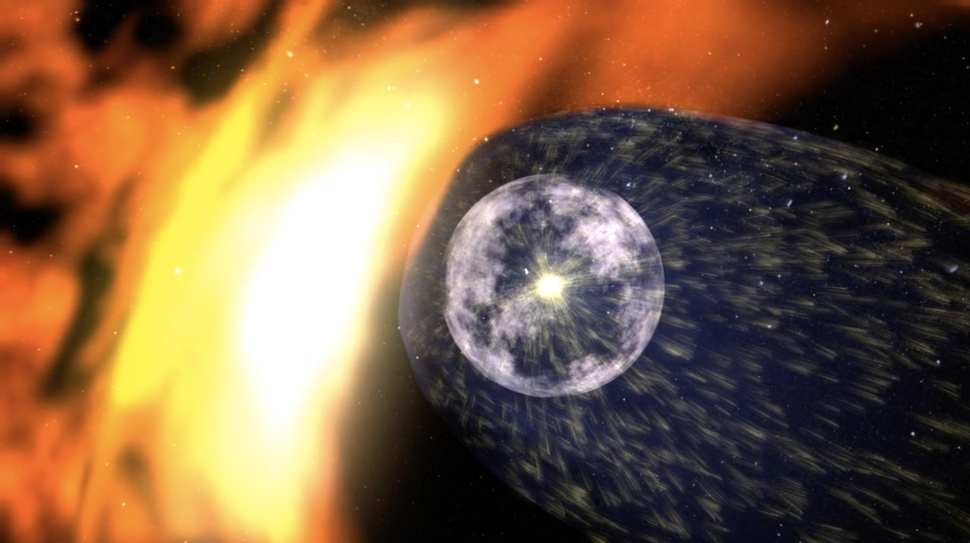There's a Violent Battle Between Solar Wind and Cosmic Rays, and Voyager 2 Just Passed Through it
By Brandon Specktor - Senior Writer 3 days ago Space
At the edge of our solar system, a fierce battle rages between solar wind and interstellar rays. NASA's Voyager 2 spacecraft has now passed through the frontlines.

Enclosed in a "bubble" of solar wind called the heliosphere, our solar system is relatively safe from the ravages of cosmic rays flying through interstellar space.
(Image: © NASA Goddard Space Flight Center/ Ryan Fitzgibbons, Walt Feimer, Chris Meaney, Swarupa Nune, and Merav Opher)
Solar wind is not exactly our friend.
The flood of hot, electric particles constantly gushing out of the sun bathes the entire solar system in radiation, frying the occasional satellite and making life impossible on any planet not shielded by an atmosphere. In both a literal and figurative sense, the solar wind blows — but, as new observations from the edge of our solar system suggest, it also protects everything it touches from the even more damaging forces of interstellar space.
As the solar wind flows outward for billions of miles in every direction, it creates a bubble of energy that surrounds our entire solar system. At the edge of this bubble, where the solar wind finally collides with powerful cosmic rays beaming through interstellar space, there is a hot, thick wall of plasma called the heliopause. This cosmic border sits about 120 times farther from the sun than Earth does, where it helps deflect and dilute the powerful radiation released by distant stars and celestial explosions.
Now, in a series of studies published Nov. 4 in the journal Nature Astronomy, astronomers directly analyzed this cosmic frontier for the first time using data collected by NASA's Voyager 2 spacecraft, which passed through the heliopause and into interstellar space a year ago.
While Voyager 2 was able to cruise seamlessly through the heliopause in about a day, researchers found that the plasma barrier was significantly hotter and thicker than previous studies estimated, effectively forming a physical shield between our solar system and interstellar space. According to study co-author Edward Stone, an astronomer at the California Institute of Technology who has worked on the Voyager program since it launched in 1977, this shield stops about 70% of cosmic radiation from breaking into our solar system.
More:
https://www.livescience.com/voyager-2-detects-heliopause-plasma-shield.html
